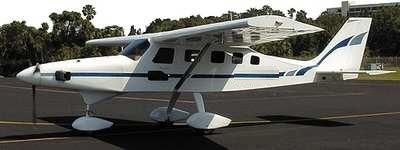Host Of A Popular Fishing Program Was Fatally Injured When His Kit-Built Plane Went Down
The NTSB has issued its preliminary report in an accident that stunned the Florida fishing community with the fatal injury of the host of a popular broadcast and Internet fishing show. Jose Wejebe was flying his kit-built CA8-SF when it went down near Everglades City in FL. Witnesses said the airplane went down just moments after takeoff, having reached only about 150 feet in altitude. Weather does not appear to be a factor, and the initial investigation confirmed the continuity of all flight controls.

NTSB Identification: ERA12FA271
14 CFR Part 91: General Aviation
Accident occurred Friday, April 06, 2012 in Everglades City, FL
Aircraft: WEJEBE JOSE CA8 -SF, registration: N548SF
Injuries: 1 Fatal.
This is preliminary information, subject to change, and may contain errors. Any errors in this report will be corrected when the final report has been completed.
On April 6, 2012, at 1745 eastern daylight time, an experimental amateur-built CA8-SF, N548SF, was substantially damaged when it impacted the ground shortly after takeoff from Everglades Airpark (X01), Everglades City, Florida. The certificated private pilot was fatally injured. Visual meteorological conditions prevailed and no flight plan was filed for the flight which was destined for Merritt Island Airport (COI), Merritt Island, Florida. The personal flight was conducted under the provisions of Title 14 Code of Federal Regulations Part 91.
According to a witness, the airplane departed from runway 33 and made a sharp right turn at an altitude of about 100 to 150 feet. The airplane then entered a nose-down attitude and veered to the left, until it impacted the ground in a 10-15 degree left-wing-low attitude.
The airplane impacted the ground about 275 yards east of the departure end of runway 33. The wreckage path was about 20 feet in length, and initiated with 2 indentations in the ground, similar to the shape of the propeller spinner. The propeller was separated from the engine and located prior to the main wreckage along the wreckage path.

The main wreckage was oriented on a heading of 050 degrees, and nearly consumed by the post-crash fire. The left wing was separated from the fuselage and came to rest on top of the cockpit area. The engine was separated from the firewall and came to rest adjacent to the leading edge of the left wing. The remnants of the right wing, fuselage, and empennage sections remained attached through cables and wiring. The vertical stabilizer was lying flat on top of the right horizontal stabilizer.
Flight control continuity was confirmed from the cockpit to the flight controls.
The airplane and engine were recovered from the accident site and retained for further investigation.
The pilot held a private pilot certificate, with a rating for airplane single-engine land. His most recent third-class FAA medical certificate was issued on February 24, 2011. At that time, he reported 1,208 hours of total flight experience.
The wind recorded at Naples Municipal Airport (KAPF), Naples, Florida, located about 27 nautical miles northwest of the accident site, at 1753 was from 310 degrees at 12 knots gusting to 21 knots. (Comp Air CA8 image from file)
 NTSB Final Report: Rutan Long-EZ
NTSB Final Report: Rutan Long-EZ ANN FAQ: Turn On Post Notifications
ANN FAQ: Turn On Post Notifications Classic Aero-TV: ICAS Perspectives - Advice for New Air Show Performers
Classic Aero-TV: ICAS Perspectives - Advice for New Air Show Performers ANN's Daily Aero-Linx (06.28.25)
ANN's Daily Aero-Linx (06.28.25) Aero-News: Quote of the Day (06.28.25)
Aero-News: Quote of the Day (06.28.25)




